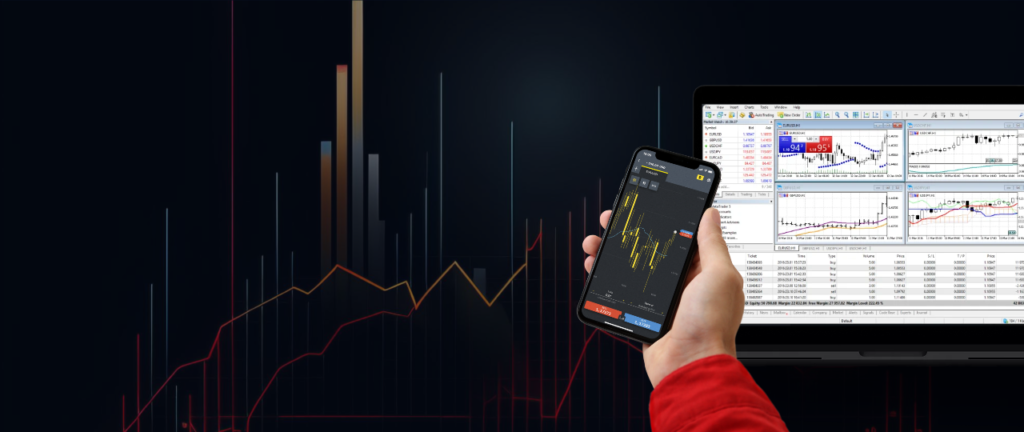Forex trading has become increasingly popular among traders worldwide, thanks to its potential for high returns and the flexibility it offers. One of the most powerful tools for forex trading is the MetaTrader 5 (MT5) platform, and when paired with a reputable broker like Exness, it can significantly enhance your trading experience. In this article, we will explore the benefits of using Exness MT5 for forex trading and how it can help you achieve your financial goals.
Why Choose Exness MT5?
Exness is a well-established broker known for its reliability, competitive spreads, and excellent customer support. When you trade with Exness using the MT5 platform, you gain access to a wide range of features designed to improve your trading efficiency and profitability.
1. Advanced Trading Tools and Features
MetaTrader 5 is the latest version of the MetaTrader platform, offering advanced trading tools and features that cater to both novice and experienced traders. Some of the key features of Exness MT5 include:
- Multiple Order Types: MT5 supports various order types, including market orders, pending orders, stop orders, and trailing stops, allowing you to implement complex trading strategies.
- Comprehensive Analysis Tools: With 38 built-in technical indicators, 22 analytical tools, and 46 graphical objects, MT5 provides a robust environment for technical analysis.
- Algorithmic Trading: MT5 supports automated trading through Expert Advisors (EAs), enabling you to execute trades based on pre-set criteria without manual intervention.
- Economic Calendar: Stay updated with the latest economic events and news that can impact the forex market, helping you make informed trading decisions.
2. Enhanced Trading Experience
Exness MT5 offers a seamless trading experience with its user-friendly interface and powerful features. The platform is available on multiple devices, including Windows, macOS, iOS, and Android, ensuring you can trade anytime, anywhere. Additionally, Exness provides excellent customer support and educational resources to help you get the most out of your trading experience.
3. Competitive Trading Conditions
Exness is known for its competitive trading conditions, including tight spreads, low commissions, and high leverage options. These conditions can help you maximize your trading potential and achieve better returns on your investments. Moreover, Exness offers a wide range of trading instruments, including forex pairs, commodities, indices, and cryptocurrencies, giving you ample opportunities to diversify your portfolio.
4. Security and Reliability
When it comes to trading, security and reliability are paramount. Exness is regulated by several reputable financial authorities, ensuring that your funds are safe and your trading activities are conducted in a secure environment. The MT5 platform also employs advanced encryption and security protocols to protect your data and transactions.
Getting Started with Exness MT5
Starting your forex trading journey with Exness MT5 is straightforward. Follow these steps to get started:
- Open an Account: Visit the Exness website and open a trading account. You will need to provide some personal information and verify your identity.
- Download MT5: Download the MetaTrader 5 platform from the Exness website. The platform is available for various operating systems and devices.
- Fund Your Account: Deposit funds into your trading account using one of the available payment methods. Exness offers a variety of payment options, including bank transfers, credit/debit cards, and e-wallets.
- Start Trading: Log in to your MT5 account, choose your preferred trading instruments, and start trading. Utilize the advanced tools and features of MT5 to analyze the market and execute your trades.
Tips for Successful Forex Trading with Exness MT5
To make the most of your forex trading experience with Exness MT5, consider the following tips:
- Educate Yourself: Take advantage of the educational resources provided by Exness, including webinars, tutorials, and articles. Understanding the basics of forex trading and the features of MT5 will help you make informed decisions.
- Develop a Trading Plan: Create a trading plan that outlines your goals, risk tolerance, and trading strategies. Stick to your plan and avoid making impulsive decisions based on emotions.
- Practice with a Demo Account: Before trading with real money, practice with a demo account to familiarize yourself with the MT5 platform and test your trading strategies.
- Stay Informed: Keep up-to-date with the latest market news and economic events that can impact the forex market. Use the economic calendar and news features of MT5 to stay informed.
- Manage Your Risk: Implement risk management strategies, such as setting stop-loss orders and using proper position sizing, to protect your capital and minimize losses.
Forex trading with Exness MT5 offers a powerful and flexible trading experience, thanks to the advanced features of the MetaTrader 5 platform and the competitive trading conditions provided by Exness. By leveraging the tools and resources available, you can enhance your trading skills and achieve your financial goals. Whether you are a beginner or an experienced trader, Exness MT5 is a reliable choice for your forex trading journey.


